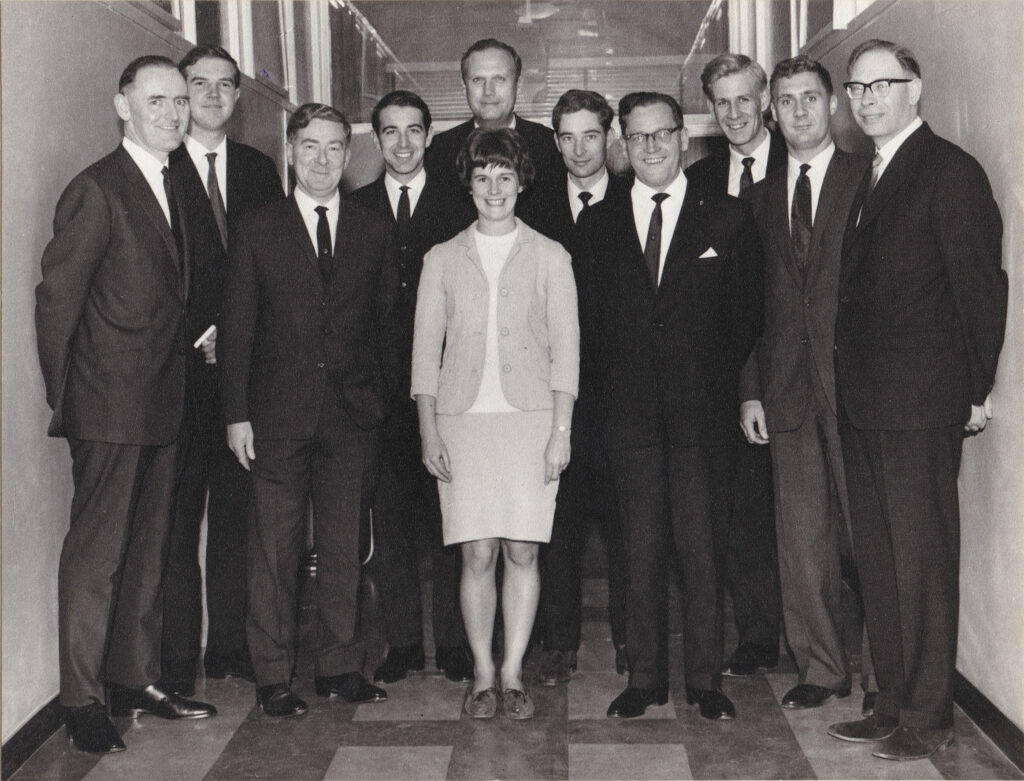
If you know me or are even an occasional reader of this blog, you’ll know that I talk a lot about my mother, Gloria Hardman. That’s because, to borrow the title of Jason Reynolds’ excellent podcast, my mother made me. (Also, do check out his podcast.) Beyond being my mother, Gloria is an important person in her own right. As my late stepfather Jack Hardman used to say, “Your mother is a remarkable woman.”
She is.
I’ve written a profile of her 50-year career in computing for IEEE: Annals of the History of Computing. She began at IBM in London in the era of punch cards and ended at Yale University in the era of smart phones. Go download the pdf! (No paywall.)
Though the editors kindly granted me several hundred words over the 3500-word limit, we nonetheless cut elements that I would have liked to retain. The penultimate paragraph got cut very late in the process:
“Well paid for a woman” became a family shorthand for gender-based injustice and inspired her daughter Linda Nel to propose the SPI Gender Equality Index on the Swiss stock exchange. Launched in 2021 by the SIX organization in conjunction with the anniversary of 50 years of women’s federal voting rights in Switzerland, the index ranks companies in terms of how many women they have in top management, enabling investors to support companies that promote women.
I had it in the original — and I’m including it here — because it gestures to her legacy. When you read the profile of her, you’ll not only get the story behind that “well paid for a woman” quotation. You’ll also understand why the photo at the top of this post is also my iPhone’s lockscreen image.

That photo would fit well with the 100 collected in Immy Humes’ The Only Woman (Phaidon, 2022), each of which features one woman among men. As Humes writes in her introduction, “Each photo offers forensic evidence of patriarchy on parade, along with all the other forces of domination.” She also asks, “Why her and only her? What does her onliness mean?” Thanks to the memoirs my mother wrote before Alzheimer’s claimed her memory, my profile of her also offers some sense of what it feels like to be the only woman in the room.
Since I am a scholar of children’s literature (and not the history of computing), you might wonder how I cam to write this piece for IEEE: Annals of the History of Computing. Or you might not — in which case, skip these two paragraphs. In early June, I was at the Smithsonian, photographing Barnaby strips from 1951 for the fifth and final volume of Crockett Johnson’s comic strip, to be published by Fantagraphics next year. It’s more difficult to find clean copies of 70-year-old comic strips than you might expect. Johnson himself pasted these in binders, in the hopes that, one day, they would be photographed and published. The binders are in his papers, housed in the Mathematics Division of the the Smithsonian.
Yes. The Mathematics Division. He spent his final decade creating geometric paintings of mathematical theorems, and (in some cases) using his painting to devise two original theorems of his own. Thanks to the interest of former curator Dr. Uta Merzbach, Johnson’s paintings and papers are in the Smithsonian’s Mathematics Collection. In the process of writing my biography of Johnson and Ruth Krauss (2012) and then of collecting Johnson’s Barnaby strips for Fantagraphics (2013-2023), I have made many trips there. One happy result of this research is that I have known the current curator, Dr. Peggy Kidwell, for over twenty years. (Peggy is a remarkable person in her own right & deserves a profile of her own!) During this last visit, over lunch, I mentioned my mother’s early years in computing. Gloria’s career as a mathematics and computer educator has long been a point of connection between me and Peggy, herself a scholar of the history of mathematics teaching and computing. She suggested I submit an account of Gloria’s life in computing to the “Anecdotes” section of IEEE.
So, a heartfelt thanks to Peggy for the idea of sending this to IEEE!
Thanks again to all who responded to my queries. You’re all thanked in the acknowledgments at the end of the article. But thank-yous are always worth repeating. So, sincere thanks to Jenn Borggaard, Ann Cahill, Brian Donlon, David Hirsch, Trip Kirkpatrick, Jan Miksovsky, Linda Nel, Alina Nevins, Paul Parry, Ba Penney, Chris Penney, Jeff Pettiross, Matt Plum, Matt Regan, Josh Rose, Stephen Sloan, Peter Snow, Risa Sodi, Jill Speed, and Terry Wong. I wish I could have included quotations from everyone who wrote to or talked with me. I couldn’t, but please know that your words shaped my narrative.
Big thanks to Alex Rigopulos, who should be included in the above list! (I thought my thank-you list was complete, and realized after publication that it was not. Arg!)
For additional guidance, thanks to IEEE: Annals editors Alexander Magoun and David Hemmendinger.
Some thanks that, due to timing, didn’t make into the article itself. For permission to reproduce the photo from the Choate 1987-1989 Course Catalogue, thanks to Choate Rosemary Hall’s Brianna St. John, Marlise Langan, and Stephanie Gold.
Other blog posts featuring my mother:
- “Running Out of Time” (15 Jan. 2016). Written for my late friend Alison Piepmeier’s blog. The unnamed relative in the post is my mother. Shortly after I posted it, she responded to my query saying that yes, of course, I could identify her. But, at the time, I decided to simply leave it anonymous.
- “For Mom” (7 May 2016). My mother was my first best friend. I shared this with her on Mother’s Day 2015. I decided to post it on for Mother’s Day 2016.
- “The Archive of Childhood, Part 3: Earliest Memories” (29 Aug. 2018). My earliest memories feature my mother.
- “The Bright Side: #PlagueSongs, no. 3” (31 Mar. 2020). In which I sing my mother’s favorite song, “Always Look on the Bright Side of Life.”
- “Good Grief” (4 Nov. 2021). My mother’s slow slog through Alzheimer’s has afforded us time to mourn and to reflect on grief. Here is what I’ve learned.

TM
Philip Nel